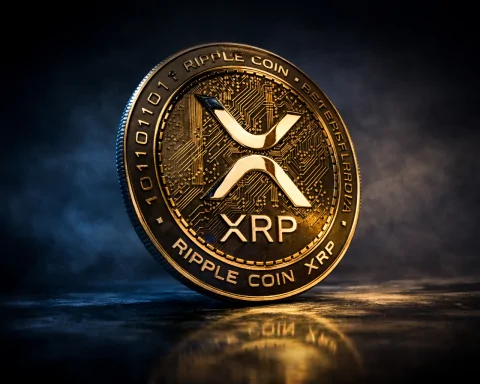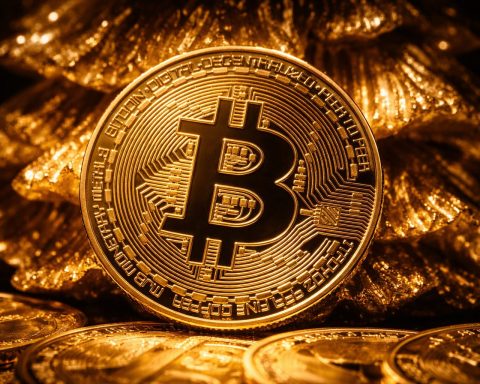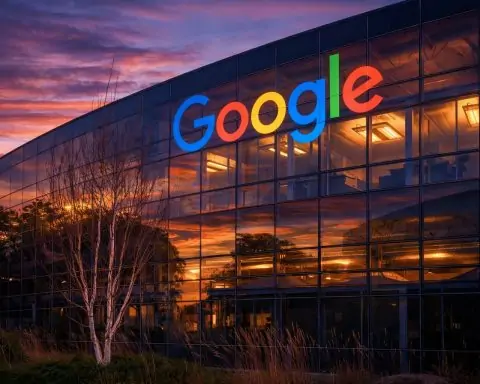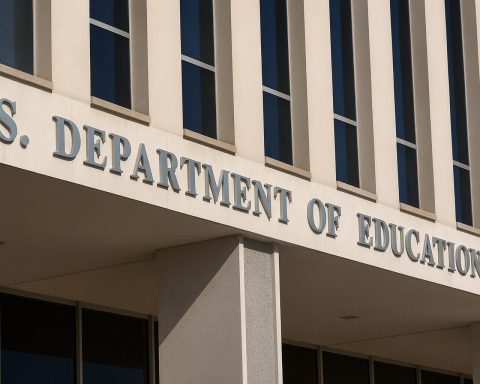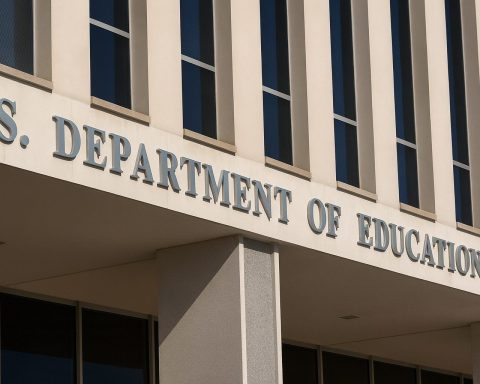- Major Policy Shift: The Trump administration agreed to resume canceling federal student debt for millions of borrowers in income-driven repayment plans, under a court-approved deal with the American Federation of Teachers (AFT) [1] [2]. The Education Department will process loan discharges for eligible borrowers in programs like Income-Contingent Repayment (ICR), Pay-As-You-Earn (PAYE) and Public Service Loan Forgiveness (PSLF) [3] [4].
- Who Qualifies: Roughly 2–2.5 million people are affected – those who’ve made the required 20–25 years of payments under qualifying plans [5] [6]. Notices telling borrowers “You are now eligible to have some or all of your loans discharged” began arriving in early October [7] [8], with an opt-out deadline of Oct. 21, 2025 (to avoid state taxes).
- Tax-Free Relief: Crucially, any loans forgiven in 2025 will not generate federal tax bills [9] [10]. By law, debt canceled through Dec. 31, 2025, is tax-exempt. The new deal formally ensures borrowers won’t receive surprise IRS notices for debt relief processed before year-end [11] [12].
- Background: The AFT sued the Department of Education in March 2025 to force action after the administration had paused loan forgiveness programs citing court injunctions. In response to that litigation, Trump’s DOE reversed course, allowing long-stalled IBR/PAYE forgiveness to resume and now expanding it to ICR and PSLF borrowers [13] [14]. AFT President Randi Weingarten hailed the agreement as “a tremendous win for borrowers,” restoring relief that had been “denied” under the administration’s earlier interpretation of court orders [15] [16].
- Stock Market Impact: The shift in policy comes amid broader market moves. Education-sector stocks had suffered this year under tighter loan caps – for example, the SPDR Education ETF (EDUC) fell about 12% when Congress passed Trump’s loan overhaul in July [17], and for-profit schools like Strayer Education (NASDAQ: STRA) plunged over 18% on enrollment concerns [18]. By contrast, fintech lenders are rallying. SoFi Technologies (NASDAQ: SOFI) has surged ~230% in 2025 to highs near $30 [19] (it traded around $26–29 recently), and Upstart (NASDAQ: UPST) sits near $50 – reflecting growth in private student lending as federal loans change. Analysts note these stocks may “reflect much of [the] good news” already [20] [21].
The Trump administration quietly agreed to a court-supervised settlement with the AFT on Oct. 17, 2025, directing the Department of Education to speed up student loan cancellations under existing federal programs [22] [23]. The deal – awaiting final judge approval – requires DOE to process forgiveness applications for all borrowers who hit the payment threshold in qualifying Income-Driven Repayment (IDR) plans (original ICR, PAYE, and the classic IBR) as long as those plans exist [24] [25]. In practice, this means millions of borrowers who made 20–25 years of payments will finally see remaining balances wiped out, whereas under the administration’s previous stance many had been stuck in limbo. AFT President Randi Weingarten celebrated the outcome: “a huge part of that affordability fight was vindicated” and borrowers “stuck in limbo can either get immediate relief or finally see a light at the end of the tunnel” [26] [27].
Crucially, the agreement shields borrowers from tax penalties on any debt canceled this year. The American Rescue Plan’s federal tax exemption for student loan forgiveness expires Dec. 31, 2025; the new filing ensures that any cancellations completed by year-end will count as 2025 discharges, so borrowers “won’t ever get taxed on that relief” [28] [29]. Education Dept. lawyers told the court that the agency will treat the effective discharge date as when the borrower became eligible (not the bureaucratic processing date), meaning that even if notices go out next year, the debt is considered wiped in 2025 [30] [31]. In simple terms: if you reached forgiveness after your October payment, the IRS will record the cancellation as having happened this year.
This deal reverses months of policy confusion. Earlier in 2025, DOE had removed income-driven repayment applications from its websites and temporarily halted processing of discharges under IBR/ICR/PAYE – actions blamed on a May court ruling that blocked the Biden-era SAVE plan [32] [33]. Borrowers who had anticipated loan cancellation after decades of payments were left wondering if their relief would ever arrive. The AFT’s lawsuit alleged that by waiting years and then “denying borrowers the relief they were owed,” the administration flouted federal law [34] [35]. Under the new agreement, all backlog processing is to resume immediately. DOE is also reimbursing any extra payments borrowers made after qualifying (for example, if your final qualifying payment came in October but was posted in November, you’ll be refunded) [36].
Borrower advocates are already hearing from people whose loans were “decades-old” and just got cleared. One borrower posted tearfully that a balance over $200,000 – which would have taken 40 years to pay – was suddenly forgiven after she received a “golden email” notification [37]. Experts stress that this relief will not come overnight for everyone, but within two weeks after Oct. 21 most discharges should process [38]. AFT attorney Winston Berkman-Breen notes, “This is a tremendous win for borrowers. With today’s filing, borrowers can rest a little easier knowing that they won’t be unjustly hit with a tax bill once their student loans are finally canceled” [39] [40].
Expert Commentary: Education experts and consumer advocates see this as a mixed development. On the positive side, millions of public servants and low-income borrowers will get relief owed under long-standing law. “For nearly a decade, [the AFT] has fought for the rights of student loan borrowers to be freed from the shackles of unjust debt,” Weingarten said [41]. Protect Borrowers’ Berkman-Breen echoed that sentiment, and added that the DOE’s commitment to follow the settlement under court supervision means legal pressure will enforce timely cancellations [42].
However, significant challenges remain. A backlog of over 1 million pending IDR applications still exists, in part because of staffing gaps during the federal government shutdown this month [43]. Higher-ed analyst Mark Kantrowitz warns that until Congress funding issues are resolved, loan processing will be stalled; he notes “no progress on the IDR backlog during the shutdown, as the staff who work on it aren’t considered ‘essential,’” calling the delay “disruptive to the lives of borrowers” [44]. In other words, many borrowers who recently applied for income-driven plans (to lower monthly payments) remain in limbo, accruing interest. The new agreement does not immediately clear those backlogged IDR enrollees – it specifically addresses people who have already reached payment thresholds. Nor does it affect the new two-plan system (standard vs. the new Repayment Assistance Plan) that Congress imposed for future loans starting in 2026 [45]. Advocates like Persis Yu of the Student Borrower Protection Center point out that millions more are awaiting decisions on other programs (e.g. the latest PSLF fixes or the old ICR plan), so many borrowers remain “desperately waiting for loan forgiveness” [46] [47].
Market and Economic Analysis: Financial markets have largely anticipated some level of student debt relief, especially after years of debate. Education stocks weakened earlier this year when loan limits were tightened: ETFs like the SPDR Education fund (ticker EDUC) fell about 12% when Trump’s “One Big Beautiful Bill” passed in July [48]. Similarly, for-profit college stocks suffered (Strayer Education (NASDAQ: STRA) was down ~18% as of Oct. 2025 on concerns about enrollment [49]). By contrast, fintech lenders have rallied on the news that federal lending is contracting. For example, SoFi Technologies (NASDAQ: SOFI) has seen its share price jump ~230% year-to-date, trading in the high-$20s after hitting a 52-week peak near $30 [50]. That surge reflects investors betting on increased private refinancing demand – SoFi even noted a potential $1.6 trillion market opportunity if the government sells federal loan portfolios to private lenders [51]. Upstart Holdings (NASDAQ: UPST) and SoFi are both well above pre-summer levels (Upstart around $50) as lower interest rates and the resumption of some borrower payments boost fintech loan volumes.
Looking ahead, analysts are mixed. Some see the stock rally as partly priced in: Wall Street consensus sees fair values of mid-$20s for SoFi [52] (around its current range), with some firms still bullish on higher growth. On the broader economy, experts expect a modest boost from debt cancellations. Making room in their budgets could allow relieved borrowers to spend more on housing, travel or retirement savings, providing a small tailwind to consumer sectors. (For context, a New York Fed study last year found that resuming loan payments would only shave about 0.1 percentage point off aggregate spending [53] – so conversely, forgiving those payments likely boosts spending by a similarly modest amount.) However, any stimulus is muted by competing factors: inflation is easing, rates remain near cycle highs, and the partial government shutdown has created other economic drag.
What’s Next: The agreement now goes to a federal judge in Virginia, where the AFT case was filed. Once approved, the Education Department has committed to clear the current forgiveness queue quickly (processing most cancellations within weeks after Oct 21). Borrowers will receive official notices and must accept or decline the relief. Those who proceed will see their loans discharged soon. All discharges finalized by year-end 2025 will automatically be treated as tax-free. Looking further out, students taking out new loans will enter the simplified two-plan system (Standard or the revamped IBR/RAP) set to kick in mid-2026 [54]. Meanwhile, political and legal debates will continue: some GOP officials have privately floated selling off federal loans to cut government losses (a move that could hand more business to fintech lenders), while Democrats and advocates may push to extend tax-free forgiveness beyond 2025.
Sources & Quotes: Our report draws on multiple news outlets and expert statements. Key details of the deal come from Fox Business, Newsweek, and Times of India [55] [56]. We quote AFT President Weingarten and Protect Borrowers’ Winston Berkman-Breen on the victory for borrowers [57] [58], as well as a DOE spokesperson describing the agreement’s mechanics [59]. Market data are current as of Oct. 20, 2025 (SoFi ~$29, Upstart ~$50, Strayer ~$80). Finally, analysts’ perspectives and stock reactions (e.g. SoFi’s 230% rally in 2025 [60], education sector ETF declines [61]) are sourced from financial press and filings.
References
1. www.foxbusiness.com, 2. timesofindia.indiatimes.com, 3. www.foxbusiness.com, 4. timesofindia.indiatimes.com, 5. www.newsweek.com, 6. ts2.tech, 7. ts2.tech, 8. ts2.tech, 9. www.foxbusiness.com, 10. timesofindia.indiatimes.com, 11. www.foxbusiness.com, 12. timesofindia.indiatimes.com, 13. www.newsweek.com, 14. ts2.tech, 15. www.foxbusiness.com, 16. www.livemint.com, 17. www.ainvest.com, 18. www.ainvest.com, 19. ts2.tech, 20. ts2.tech, 21. www.ainvest.com, 22. www.foxbusiness.com, 23. timesofindia.indiatimes.com, 24. www.foxbusiness.com, 25. timesofindia.indiatimes.com, 26. www.foxbusiness.com, 27. www.newsweek.com, 28. www.foxbusiness.com, 29. www.newsweek.com, 30. www.businessinsider.com, 31. www.businessinsider.com, 32. www.newsweek.com, 33. timesofindia.indiatimes.com, 34. www.foxbusiness.com, 35. www.newsweek.com, 36. www.foxbusiness.com, 37. ts2.tech, 38. ts2.tech, 39. www.newsweek.com, 40. www.livemint.com, 41. www.foxbusiness.com, 42. www.newsweek.com, 43. ts2.tech, 44. ts2.tech, 45. ts2.tech, 46. ts2.tech, 47. www.newsweek.com, 48. www.ainvest.com, 49. www.ainvest.com, 50. ts2.tech, 51. ts2.tech, 52. ts2.tech, 53. www.reuters.com, 54. ts2.tech, 55. www.foxbusiness.com, 56. timesofindia.indiatimes.com, 57. www.foxbusiness.com, 58. www.newsweek.com, 59. www.businessinsider.com, 60. ts2.tech, 61. www.ainvest.com



